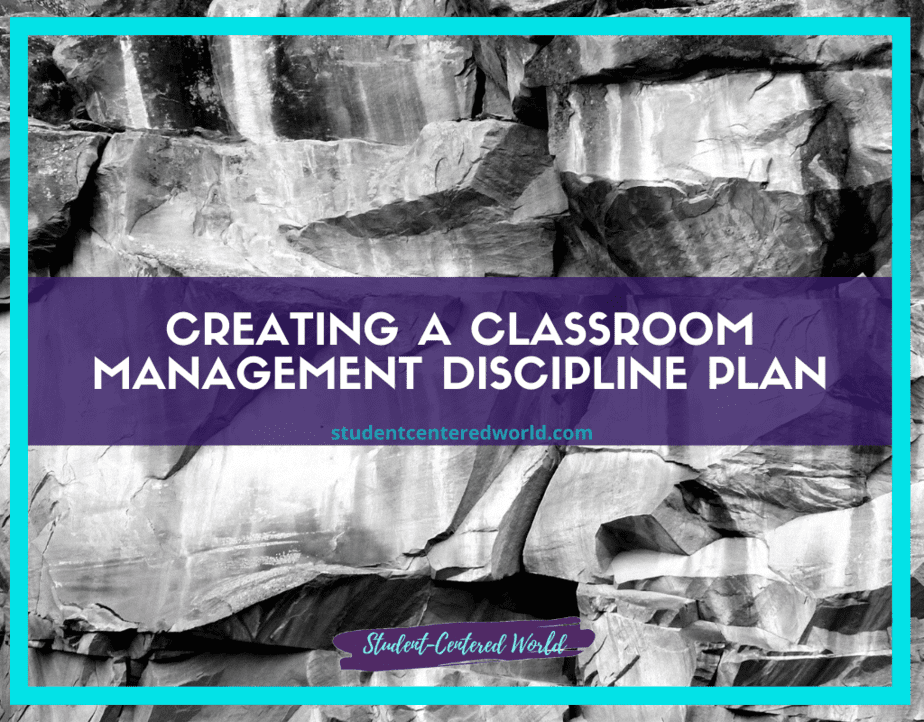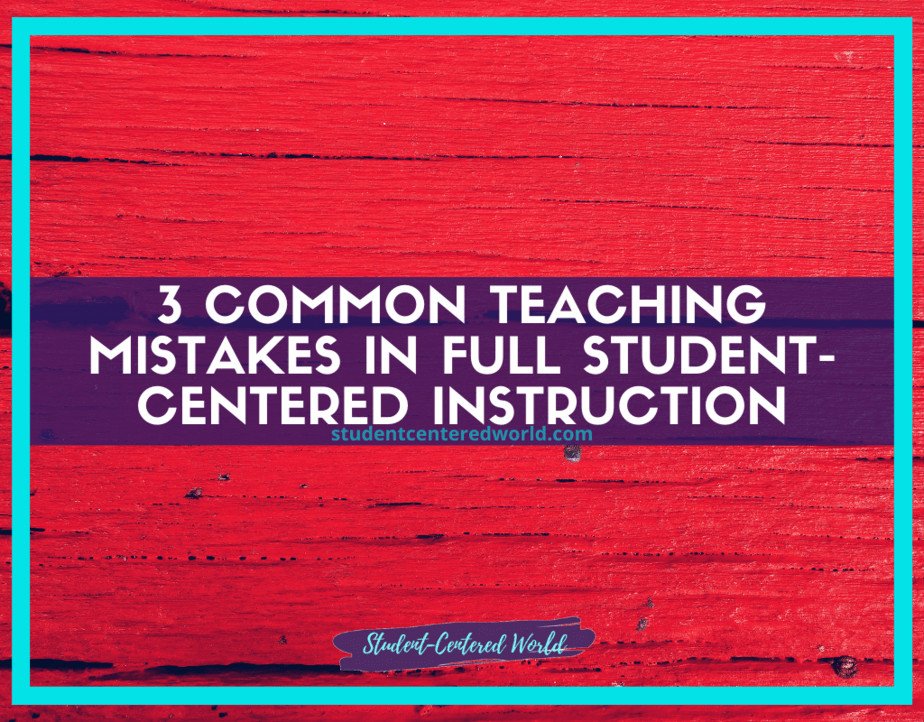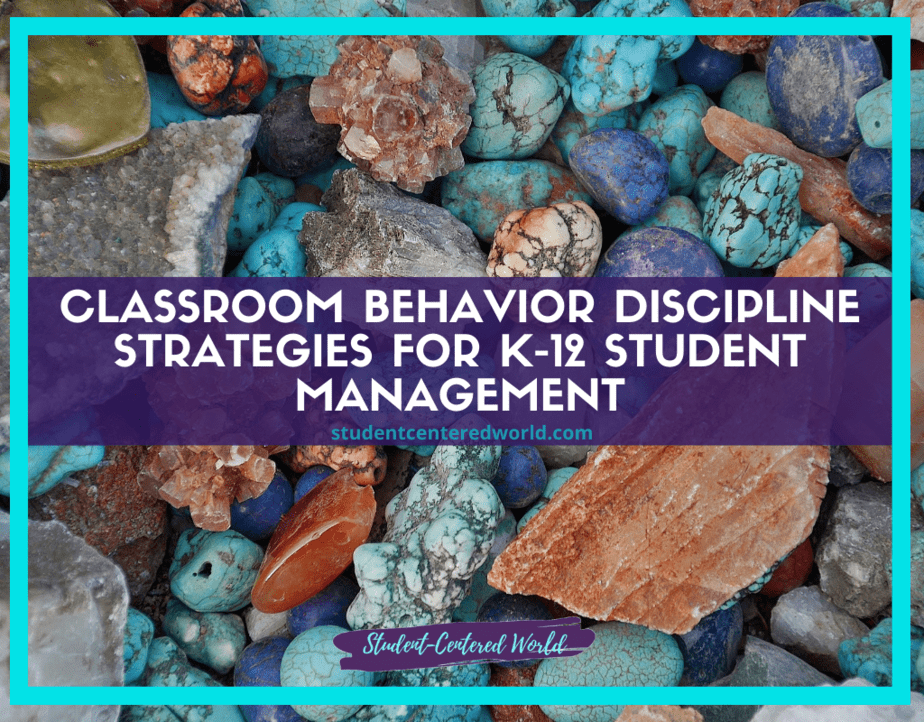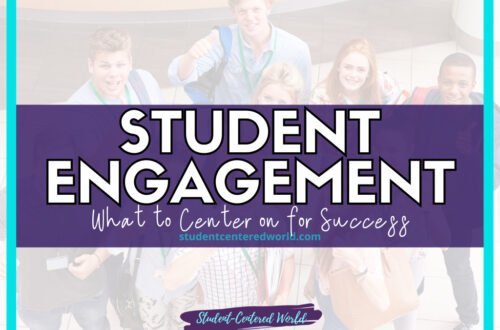Setting Behavior Goals for K-12 Students
Nothing derails a classroom faster than a child’s behavior that is less than stellar. I often find myself reminding teachers that most times when a student is giving you an issue, it actually has nothing to do with you.
That’s all fine and good, but that doesn’t help in the moment, does it? What can we do as educators to keep these disruptions to a minimum and keep our classes flowing the way that we envision?
The best way is to create behavior goals for students….all students, not just ones with IEP goals. Incorporating core ideas and practices into your classroom puts your students at an advantage and makes their opportunities for positive behavior more equitable.
The importance of movement breaks
One of the first questions I ask when teachers are having an issue is how much movement they are allowing their students as a whole in their classroom settings. Sitting quietly in rows doesn’t work for our students anymore (and I talk about the science behind this here).
Moving during class gives students energy within the school setting and allows them to practice self-regulation when they come back to the task, which is an important skill we should be helping students understand. Whereas some teachers think this is an unnecessary disruption, they aren’t taking into consideration the benefits they and their students get from this simple strategy if they make it a best practice.
First, having a few planned moments of “disruption” is much more effective than having to stop and refocus students constantly, don’t you think?
Second, movement breaks give students a chance to get up and move around so they can come back to the task with a reset. This is perfect for those kids who need more physical break time, but also for those who just don’t want to be in their seats anymore and can be used throughout the school year.
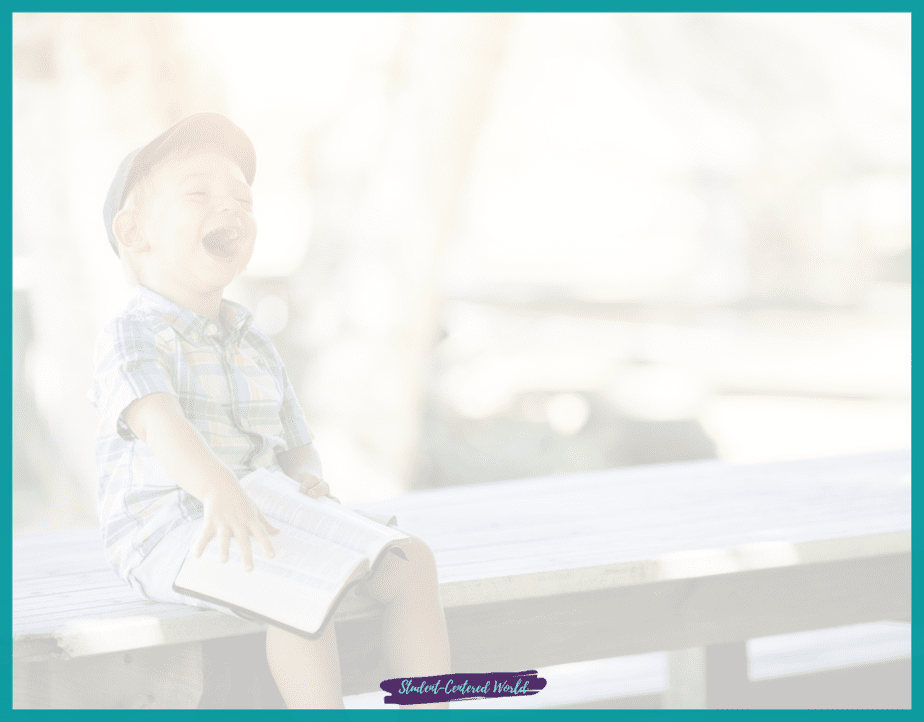
The beauty of this is that you are able to customize the movement for your student needs and a child’s behavior.
If one student gets up and walks around, that’s fine at first. However, by the end of the year, everyone should be getting up and moving around for 1-2 minutes during class time. Setting smart goals like this for your own classroom environment is important.
This also means working your way into longer times for students to go outside and use the restroom, but remember…it’s a process and it’s well worth the long-term results and is in your student’s interest.
Focusing on Positive Behavior through Social Emotional Learning
Another great way to use core ideas (and save yourself some work) is by implementing social-emotional learning into your classroom to help promote positive student behavior.
Please note: if you do this in the way that it is intended, it naturally weaves into what you’re doing every day…it is NOT just “something else” you need to take care of. I have a podcast episode with Dr. Marissa Kase that discusses all of this that can be found here.
Social-emotional learning is basically teaching students how to navigate their relationships with others, express themselves clearly, and be resilient in difficult times. I know that sounds like a lot! But you know all those strategies and skills and behavioral goals we’ve been learning about for years? They’re in here.
When you teach kids how to work with others, express themselves clearly, and be resilient through SEL, that stuff is going to sink into their brains like a sponge.

And as it sinks in, the academic content you’re teaching becomes that much more powerful and students feel like they belong to something bigger than themselves.
What we’re doing when we teach social-emotional learning is building community in the classroom, and when kids feel connected with others, they behave better towards each other – this leads to fewer disruptions.
It’s a great cycle!
Creating a behavior plan for academic goals and social skills
This is where we get to the specifics.
Once you’ve got your social-emotional learning plan ready and running (or even if you’re just planning on getting one started), it’s time to use this with academics. Truly, the use of self-regulation strategies will naturally weave into academics if you implement them properly.
The first thing I like to do is figure out what behavior goals would naturally fit my academic goals (especially in terms of measurable goals.) For example, a behavior goal might be “Students will line up quietly after they’re done working.” Or a social skill could be “Students will wait for the other person to finish before speaking themselves.”
The next step is identifying where you see these happening. Maybe it’s right after math, or after lunch. Now you can create a schedule and write in when you’ll teach this. For example: “After we do the exit ticket after the math lesson, we’re going to change into our inside shoes and line up in an orderly way.” Or “When we finish lunch, I need at least three students to come up and tell me in a clear voice how they’re going to line up.”
Obviously, this looks and sounds different depending on which grade level you are teaching.
This also isn’t “extra” for you; it is being clear in what you wish your students to be doing or achieving and laying it out when it would be applicable.
Focusing on Independent Tasks
It’s really hard to get a teacher to buy into a process like student-led learning when they’re convinced that, if left to their own devices, students will immediately get off task or not complete the assignment given to them.If this is something that is regularly happening in the classroom, it’s an understandable concern, but it merely needs to be addressed and fixed.
For example, if students are getting off task during independent work time, it’s likely because they’re not actually engaged in the work. In everything that we do in the classroom in this day in age, student engagement is everything. Competition for attention is fierce, and if students are not engaged in what they’re doing, it’s easy to get distracted.
The solution? Well, there are a lot of them! Here are some quick ideas:
-Stop giving busy work – give meaningful work. Use hands-on learning, simulations, real-world examples. Get the kids involved with a local project or something that had meaning to them in the school. There are SO many options out there, regardless of what you teach.
-Try out various seating arrangements, and change them up regularly. Flexible seating is key to helping kids focus.
-Help them understand the use of an appropriate fidget. Have chair bands, a zen garden, or stress balls for use. They make a huge difference in students who need appropriate coping strategies to help with executive function.
-If devices are an issue, make it so they have to use them to complete an assignment…or, my personal favorite, create a charging station in your classroom. They can’t be on their phones if they’re charging on the other side of the room!

As students practice independent work and get used to the strategies and behavior systems that are implemented in the classroom, they will be more likely to stay on task when left to their own devices.
Helping a child’s behavior through self-regulation skills
It’s easy to enable a child who has behavior issues or is in a negative emotional state by stepping in too soon or over-responding. It’s also easy to overlook times when they might be struggling because you can’t see them, or know how to help them.
The first step is recognizing the signs that a student is about to have a problem. Is their pencil suddenly getting heavy? Are they staring at the board instead of taking notes? Is their head down on their desk? Are they having an issue with personal space? If you watch them, you’ll soon see what’s happening, and can step in early.
Then I like to get them involved. “Hey guys, having trouble staying engaged?” or, “I notice everyone is starting to get a little tired, I think it might be time to switch things up a bit.” Let them know you understand that they’re having a difficult moment with your behavioral expectations, but that they also need to find a way to regulate that.
Teach your students how they can help themselves. “If you’re feeling tired, close your eyes for three seconds and take three deep breaths…open them again and we’ll see if it feels better.” There are so many ways that children can help themselves regulate before they have a problem from deep breathing to positive self-talk to a quiet space break. If you address it early, they can take control of their own behavior (and this is the whole purpose of behavior goals, isn’t it?)
I could go on and on with strategies for every age range, but the goal is to work from the top-down instead of the other way around.

If your students are all engaged in meaningful activities, you should have more time for your planning, which gives you the ability to provide better opportunities for independent work and success with their independent assignment.
Look at things from a systems perspective instead of being so task-oriented. It will save you so much stress and lead to a better tomorrow.
Implementing replacement behavior ideas into your classroom management system
I know that when you’re in the moment of one of these stressful situations, things sometimes just get really overwhelming. You have to do something about it NOW or there will be hell to pay! You do, however, need to make sure that you (and the student) can exhibit the appropriate emotional response to the situation.
If we step back and look at things objectively, we can usually find a better way. Instead of yelling or freaking out, consider some alternatives:
-Redirecting them can be a really great way to help them focus. When I use the phrase, “Hey guys, that’s not an appropriate choice right now” as a verbal cue, it’s just enough for them to get back on track without getting distracted again because they’re talking about what just happened. They should know better, but you have to draw a line somewhere. Doing this for consecutive weeks helps make this a natural reaction.
-Very rarely use time-outs in the classroom. It’s a lose-lose situation in the middle of a crisis, and then they spend their time thinking about what they did wrong instead of learning from it. If I want to take them out for a minute to reset, I’ll send them to the “calm-down space” in the back of the room. They can sit there and take three deep breaths without us all watching them freak out.
-If they absolutely need to move, allow them to go somewhere in the room where they can’t distract others.
-Give them a choice of how you can help them. “Do you want me to tell you what to do, or give you a job that only takes one hand?” is a great way for kids with behavior problems to take ownership of their mistakes.
-Sometimes putting them in charge is the best strategy for everyone involved. Letting a student monitor can calm them down and give them something to focus on. It also gives them ownership of a situation, which is often the missing piece causing the disruptive behavior in the first place.
When we look at things from a systems perspective, we learn to anticipate the needs of our children and prevent problems before they happen, and help with an appropriate coping strategy. We give them consistent messages, help them feel safe and supported, and respond in a way that encourages them to make good choices again next time and there will be much fewer instances of negative comments and undesired peer behavior.
You wouldn’t believe how much better I’ve been able to work with my students when I started viewing things from a systems perspective. It’s made such a difference in my career, I can’t wait to see what you’ll do with it!
Stop Driving the Teacher Struggle Bus
Are you struggling with student engagement, apathy, or keeping your class on track?
💫💫 There’s hope! 💫💫
Join my free teacher workshop “Choosing Choice” and in just 60 minutes, you’ll craft a practical plan to revitalize your teaching. Discover the magic of student choice in boosting engagement, gain quick implementation ideas, and explore strategies for year-long success.
Unlike overwhelming workshops, my approach guides you in real-time, providing more classroom options, reducing stress, and giving you more personal time.
Plus, you’ll earn a 1-hour professional development certificate and have 7 days of access.
Don’t miss this chance to transform your teaching; click below to secure your spot now!
